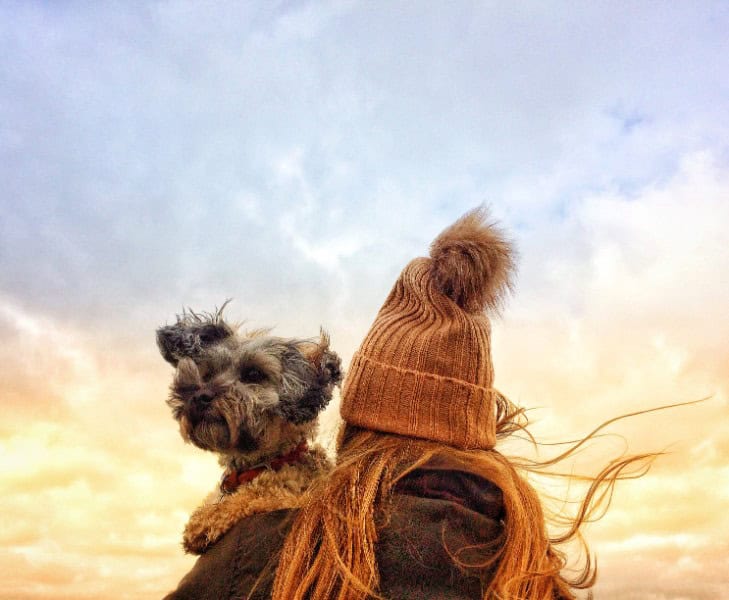Cold Weather Standard: When Winter Pet Safety Must Take Precedent

Pet owners are particularly astute when it comes to the many dangers associated with heat and hot weather. Would it surprise you to know that pets face similar risks when it’s cold, wet, and freezing outside? Frostbite, hypothermia, and paw injuries tend to top the list, but other seasonal dangers make it absolutely critical to practice the following tips for winter pet safety.
The Great Outdoors
A good rule of thumb: if it’s too cold outside for you, it’s too cold outside for your pet. While you want to keep up with daily exercise, you should take extra care when it comes to:
- Paws – Exposure to ice, salt crystals, and other chemicals can dry out sensitive paw pads, resulting in cracks, cuts, and bleeding. Booties are a great alternative, but if your dog doesn’t like wearing them, be sure to wash and dry their paws when you get home.
- Ears and nose – The ears and nose are the most common places for hypothermia to occur. Limit your pet’s time outside to reduce the effects of icy temperatures and wind.
- The coat – Many breeds prepare for winter by growing a thick undercoat, but that doesn’t mean they’re insulated from moisture. Provide a warm, waterproof jacket or vest. Smaller breeds, young pets, and aging seniors all benefit from an additional layer or two (and there’s no shortage of cute dog sweaters out there!).
Remember, there are lots of indoor pet activities such as fetch, hide-and-seek, and small agility courses to keep you both moving this winter. Plus, they’re fun and mentally stimulating!
Extra Tips for Winter Pet Safety
Highly active pets may need some extra calories during colder months, but pets who shiver or expend a lot of energy trying to stay warm (either inside or out) often require slightly more food.
Before you make any adjustments, we recommend scheduling a wellness exam. Addressing portion size, meal frequency, snacks, and supplements will keep your pet happy and healthy all winter long.
Achy and Creaky
Senior pets commonly suffer from arthritis, and keeping them comfortable is a huge priority for winter pet safety. Ensure they have bedding that’s self-heating, and place it somewhere that’s far away from cold drafts and slippery surfaces. Also, while it may seem counterintuitive, movement and exercise can actually help relieve some of the pain and pressure associated with bone/joint/mobility issues.
Look Their Best
Winter pet safety should involve some attention to your pet’s winter coat. When coupled with dry, freezing air outside, the warm, dry air inside your home can cause itchy, flaky skin. Regularly brushing your pet’s coat can help distribute the skin’s natural oils, reducing these symptoms. Plus, dander, dead hair, dirt, and dust decrease the coat’s ability to insulate your pet from the weather.
Subtle Dangers
Ethylene glycol is what makes antifreeze so effective in vehicles – and so poisonous to small animals.
- Always check your garage floor and/or driveway for leaks. Securely store bottles of antifreeze, engine coolant, and hydraulic brake fluids.
- Do not allow your pet to drink out of puddles.
- Use propylene glycol products instead.
Antifreeze can taste sort of sweet, and it doesn’t take much to cause fatal damage to a pet’s brain, liver, and kidneys. If you know or suspect your pet has consumed ethylene glycol, seek emergency care right away. Symptoms include:
- Nausea/vomiting
- Weakness
- Drunken-like behavior
- Seizures
- Coma
Please contact Mobile Vet M.D. with additional questions about winter pet safety. Dr. Kwacz is always here for you and your pet!
